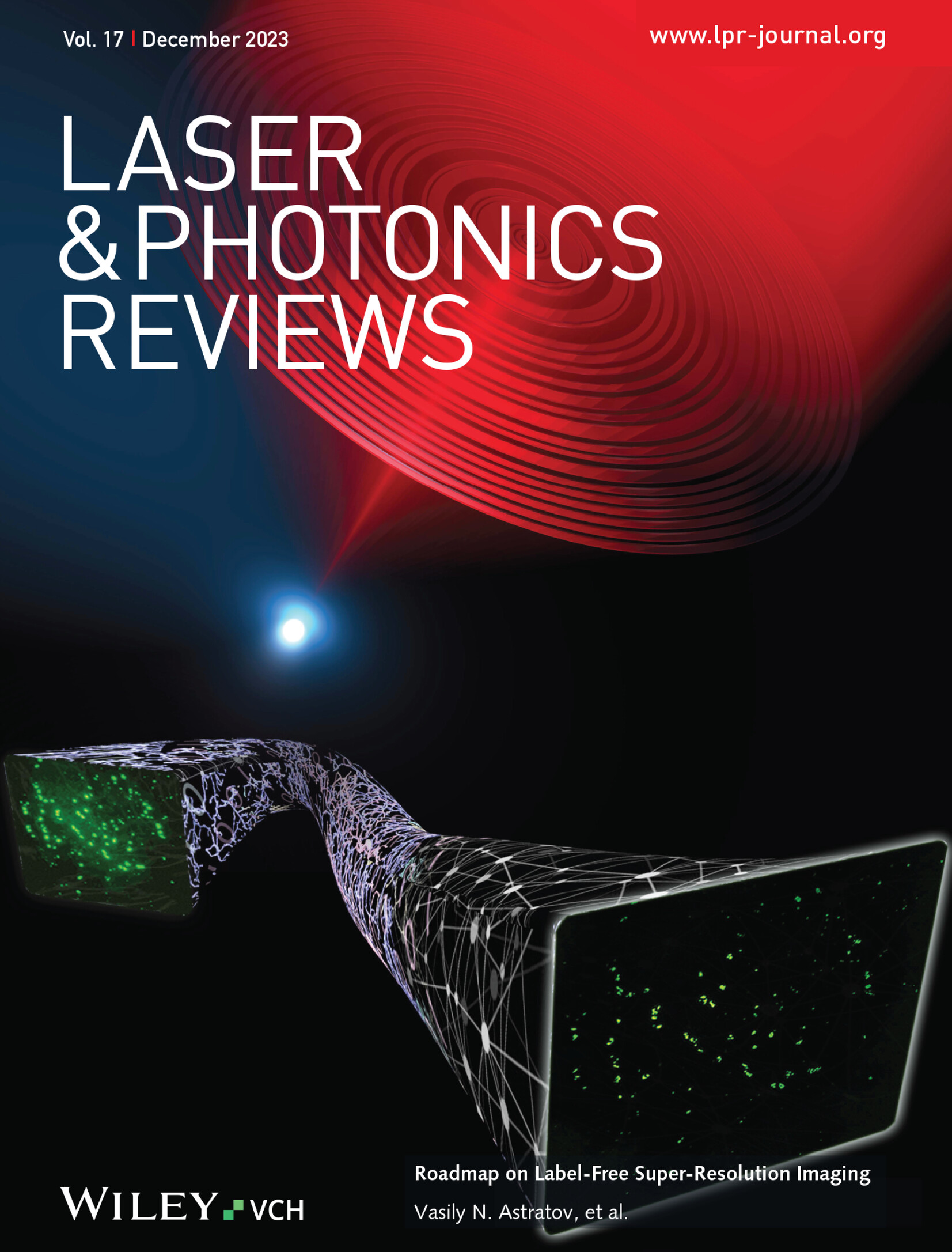Broadband Dispersive‐Wave Emission Coupled with Two‐Stage Soliton Self‐Compression in Gas‐Filled Anti‐Resonant Hollow‐Core Fibers
IF 9.8
1区 物理与天体物理
Q1 OPTICS
引用次数: 0
Abstract
The underlying mechanism of broadband dispersive‐wave emission within a resonance band of gas‐filled anti‐resonant hollow‐core fiber is studied. Both numerical and experimental results unveiled that the pump pulse with a soliton order of ≈3, launched into the hollow‐core fiber, experienced two stages of pulse compression, resulting in a multi‐peak structure of the emitted dispersive‐wave spectrum. Over the first‐stage pulse compression, a sharp increase of the pulse peak power triggers the first time of dispersive‐wave emission, and simultaneously causes the soliton frequency blue‐shift due to soliton‐plasma interactions. As the central frequency of the blue‐shifting soliton approaches to a resonance band of the hollow‐core fiber, it experiences a fast‐decreasing dispersion value in the fiber waveguide, resulting in the second stage of pulse compression. The second‐stage pulse compression triggers the second time of dispersive‐wave emission with a phase‐matched frequency slightly lower than that at the first stage. Multi‐peak spectra of the output dispersive‐waves and their formation dynamics can be understood using a delicate and unique coupling mechanism among three nonlinear effects including multi‐stage soliton compression, soliton‐plasma interaction, and phase‐matched dispersive‐wave emission. The output broadband dispersive‐wave, exhibiting good coherence and stability, can be potentially compressed to sub‐30 fs duration using a precise chirp‐compensation technique.气体填充反谐振中空芯光纤中与两级孤子自压缩耦合的宽带色散波发射
研究了充气反谐振空芯光纤谐振带内宽带色散波发射的基本机制。数值和实验结果都揭示了一个孤子阶数为≈3的泵浦脉冲在进入空芯光纤后经历了两个阶段的脉冲压缩,从而形成了多峰结构的色散波发射光谱。在第一阶段脉冲压缩过程中,脉冲峰值功率的急剧增加引发了第一次色散波发射,同时由于孤子与等离子体的相互作用,导致了孤子频率的蓝移。当蓝移孤子的中心频率接近中空芯光纤的共振频带时,它在光纤波导中的色散值会快速下降,从而导致第二阶段的脉冲压缩。第二阶段的脉冲压缩触发了第二次色散波发射,其相位匹配频率略低于第一阶段的频率。利用多级孤子压缩、孤子与等离子体相互作用以及相位匹配色散波发射等三种非线性效应之间微妙而独特的耦合机制,可以理解输出色散波的多峰光谱及其形成动力学。输出的宽带色散波具有良好的相干性和稳定性,利用精确的啁啾补偿技术有可能将其压缩到 30 fs 以下。
本文章由计算机程序翻译,如有差异,请以英文原文为准。
求助全文
约1分钟内获得全文
求助全文
来源期刊
CiteScore
14.20
自引率
5.50%
发文量
314
审稿时长
2 months
期刊介绍:
Laser & Photonics Reviews is a reputable journal that publishes high-quality Reviews, original Research Articles, and Perspectives in the field of photonics and optics. It covers both theoretical and experimental aspects, including recent groundbreaking research, specific advancements, and innovative applications.
As evidence of its impact and recognition, Laser & Photonics Reviews boasts a remarkable 2022 Impact Factor of 11.0, according to the Journal Citation Reports from Clarivate Analytics (2023). Moreover, it holds impressive rankings in the InCites Journal Citation Reports: in 2021, it was ranked 6th out of 101 in the field of Optics, 15th out of 161 in Applied Physics, and 12th out of 69 in Condensed Matter Physics.
The journal uses the ISSN numbers 1863-8880 for print and 1863-8899 for online publications.
文献相关原料
| 公司名称 | 产品信息 | 采购帮参考价格 |
|---|

 求助内容:
求助内容: 应助结果提醒方式:
应助结果提醒方式:


